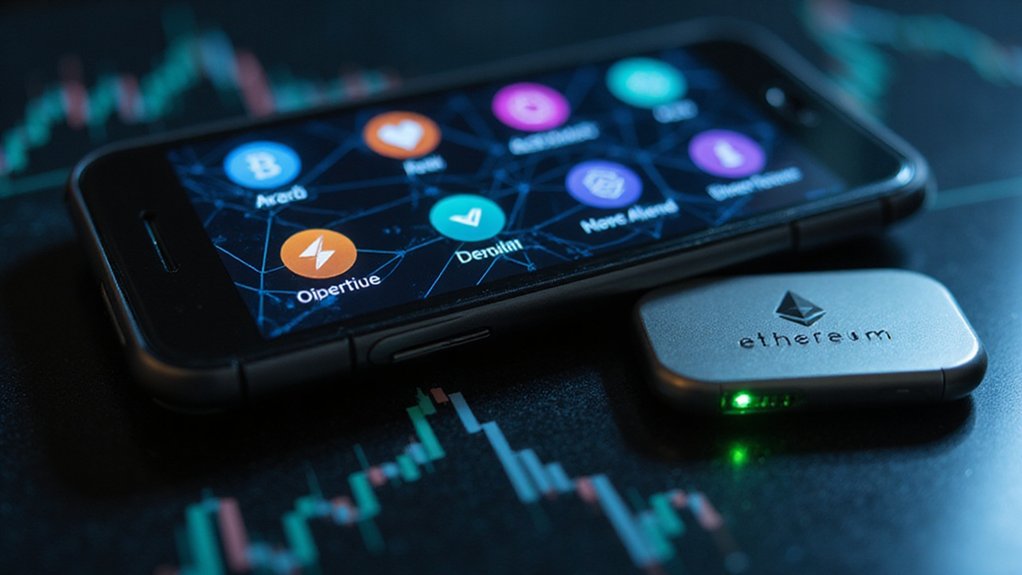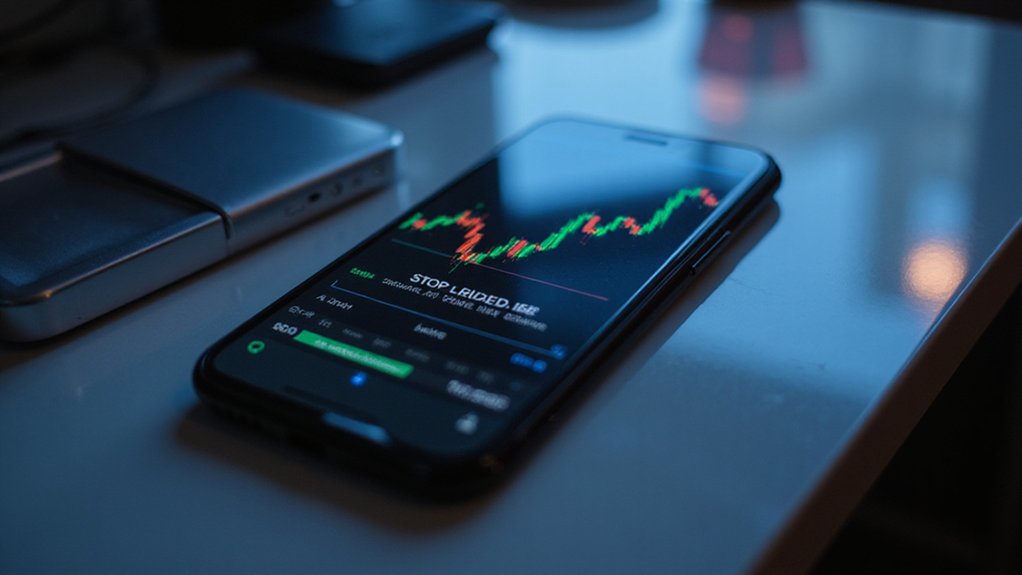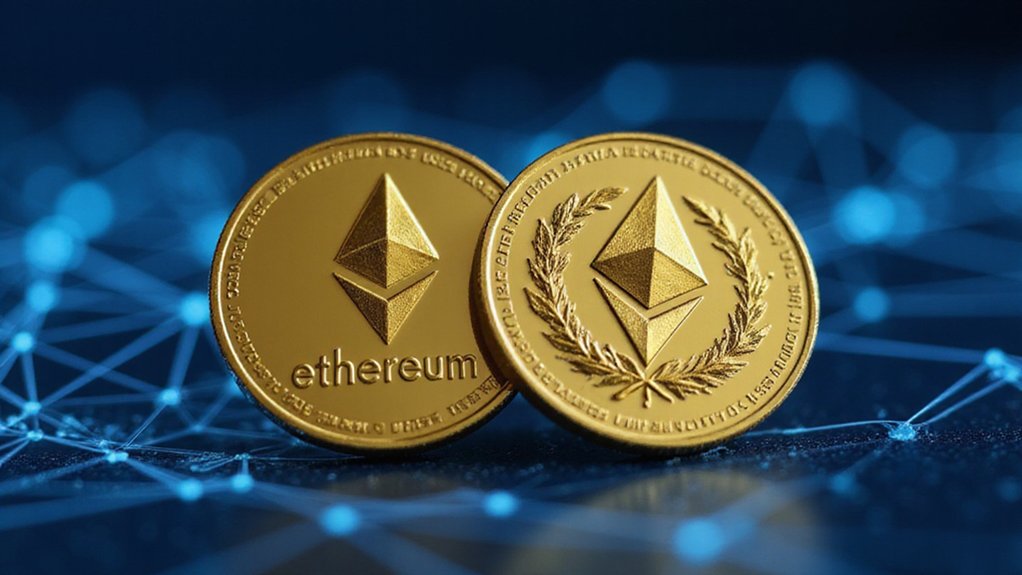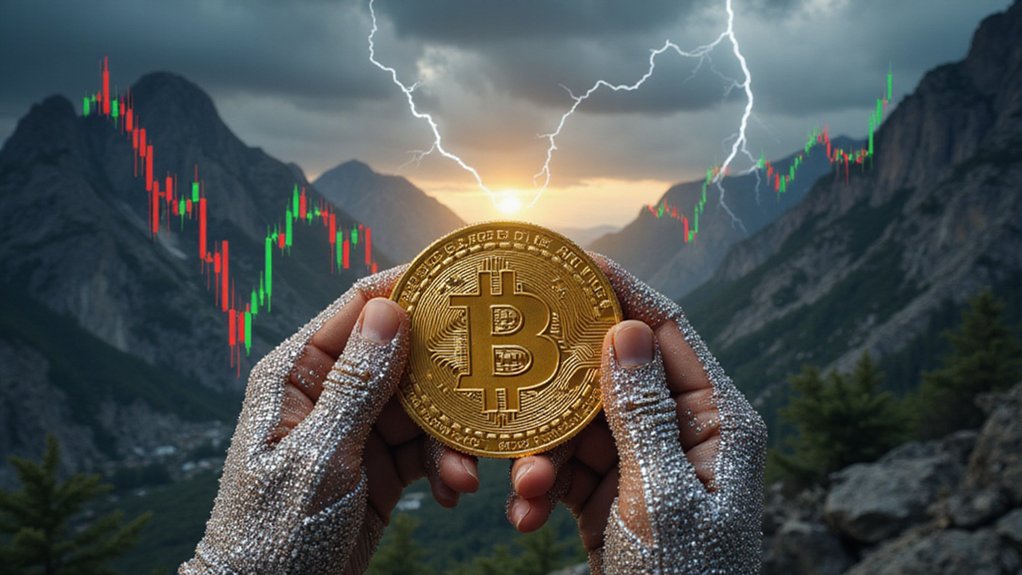ERC20 is a technical standard for fungible tokens on the Ethereum blockchain, established in 2017 after Fabian Vogelsteller’s 2015 proposal. This protocol defines essential functions and properties—name, symbol, decimals—ensuring uniform value and interchangeability across the ecosystem. By standardizing how tokens interact, ERC20 catalyzed DeFi innovation through applications like stablecoins (USDT, USDC) and wrapped tokens (WETH). The elegance lies in transforming abstract blockchain concepts into practical financial instruments with real-world utility.

The ERC20 token standard represents one of the most transformative developments in the Ethereum ecosystem—a framework that has, perhaps inadvertently, revolutionized how digital assets function in blockchain environments.
Proposed in 2015 by Fabian Vogelsteller and later formalized in 2017, this standard established a thorough set of rules and functions ensuring interoperability across Ethereum’s increasingly complex landscape.
While seemingly mundane in concept—after all, standardization rarely elicits enthusiasm—the implications have been nothing short of revolutionary for decentralized finance.
Standardization may appear uninspiring, yet its impact on decentralized finance has been genuinely transformative.
At its core, ERC20 provides the architecture for creating fungible tokens, those delightfully interchangeable digital assets that, unlike their non-fungible cousins, maintain uniform value within their respective ecosystems.
These tokens possess identical properties, making them functionally equivalent—a characteristic that, in the often bewildering world of cryptocurrency, offers a welcome dose of predictability.
Smart contracts on the Ethereum blockchain implement this standard, defining essential properties like name, symbol, and decimals (those numerical attributes that determine a token’s divisibility).
ERC-20 enhances Ethereum’s functionality by providing an API for tokens within Smart Contracts, enabling standardized interactions across the ecosystem.
The applications stemming from this standardization have proliferated with remarkable speed.
From utility tokens granting access to services (essentially digital admission tickets to various blockchain amusements) to stablecoins pegged to fiat currencies (bringing a semblance of stability to an otherwise volatile market), ERC20 has become the backbone of numerous financial innovations.
Perhaps most significantly, this standard has underpinned the explosive growth of decentralized finance applications, facilitating lending, borrowing, and trading with unprecedented efficiency.
A notable example is Wrapped Ethereum (WETH), which converts native ETH into an ERC-20 compatible token, allowing Ethereum to participate in decentralized exchanges that exclusively support the ERC-20 standard.
For developers, ERC20 represents a godsend—a well-defined interface that simplifies token development while ensuring compatibility with wallets and exchanges throughout the Ethereum ecosystem.
This standardization reduces development complexities and creates a consistent user experience across applications.
The remarkable success of ERC20 demonstrates how seemingly technical standardization can catalyze widespread adoption and innovation, transforming abstract blockchain concepts into tangible economic instruments with real-world utility and implications.
Popular examples include Tether (USDT) and USD Coin (USDC), which function as stablecoins pegged to the US dollar, providing stability in the volatile cryptocurrency market.
Frequently Asked Questions
How Do Gas Fees Impact ERC20 Token Transfers?
Gas fees substantially impact ERC20 transfers by making them 2-3 times more expensive than native ETH transactions.
While ETH transfers consume a baseline 21,000 gas units, ERC20 transfers demand 45,000-65,000 units due to their contract-based architecture.
During network congestion, this disparity compounds dramatically, forcing users to choose between paying premium priority fees or waiting hours for confirmation.
Smart contract optimization and Layer 2 solutions offer relief from these often prohibitive costs.
Can ERC20 Tokens Be Converted to Other Cryptocurrency Standards?
ERC20 tokens can indeed be “converted” to other cryptocurrency standards, though the process isn’t direct conversion but rather cross-chain interoperability solutions.
Token bridges lock original tokens while minting equivalents on target chains, wrapped tokens create standard-compliant versions across ecosystems, and DEXs facilitate swaps between different standards.
These mechanisms—each with their own trust assumptions and fee structures—essentially create representations rather than true conversions, maintaining the fiction of seamless cryptocurrency interoperability despite the technical barriers involved.
How Are ERC20 Tokens Stored Securely?
ERC20 tokens are most securely stored using hardware wallets, which keep private keys offline—beyond the reach of even the most determined hackers (who, unsurprisingly, find internet-connected devices irresistible).
For the security-conscious, additional layers like two-factor authentication, strong unique passwords, and offline storage of recovery phrases are essential practices.
The paranoid—or perhaps merely prudent—might employ cold storage solutions alongside regular software updates and vigilant verification of contract addresses through trusted sources like Etherscan.
What Happens if an ERC20 Token Project Fails?
When an ERC-20 token project fails, token holders typically face a cascading series of unfortunate events.
The token’s value often plummets precipitously as liquidity evaporates (sometimes deliberately withdrawn by developers), leaving investors with worthless digital assets stranded in their wallets.
Smart contract vulnerabilities may be exploited, transactions become irreversible, and recovery options remain virtually non-existent.
The broader ecosystem suffers reputational damage, while failed projects occasionally become targets for subsequent scams exploiting investor desperation—a sobering reminder of cryptocurrency’s frontier nature.
Are There Tax Implications for Trading ERC20 Tokens?
Trading ERC20 tokens triggers multiple tax implications.
Each sale, swap, or exchange constitutes a taxable event requiring capital gains reporting.
Tokens held under one year face short-term rates (10-37%), while longer holdings benefit from preferential long-term treatment (0-20%).
Additionally, received tokens (via airdrops or staking) are taxed as ordinary income at fair market value.
The IRS classifies these tokens as property—requiring meticulous tracking of acquisition costs and disposal values to maintain compliance with increasingly scrutinized crypto regulations.









